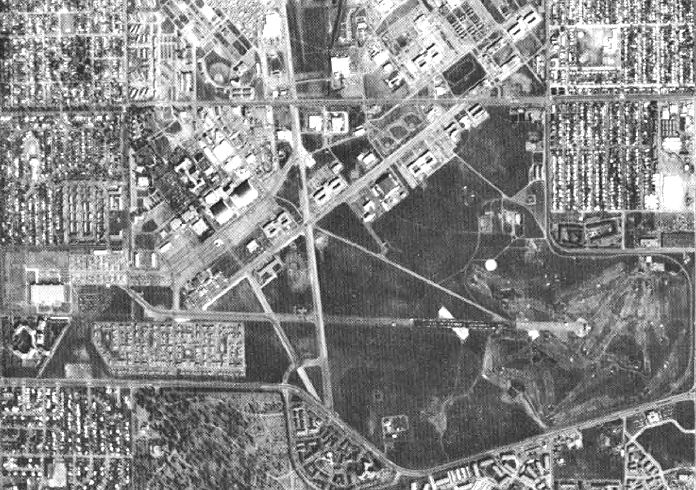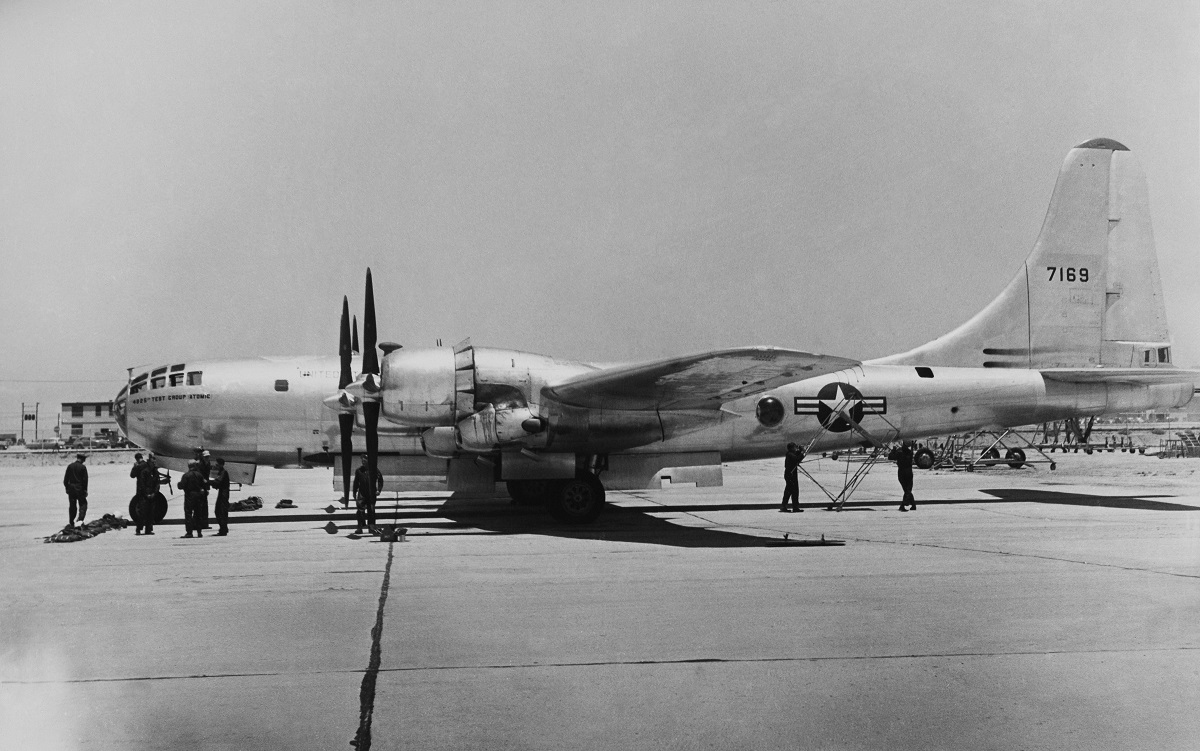In 1951 a B-29 Superfortress experiencing mechanical issues crashed into a Denver neighborhood, wiping out multiple houses and claiming a number of lives. The devastating crash raised questions about the safety of Air Force flight paths and procedures, which related to almost all of the major post-WWII expansion the US airbases saw at the time.
B-29 Crash
It was December 3, 1951, and those living in Denver went about their usual business on the run-up to Christmas. The festively decorated streets awaited excited shoppers who were living through the prosperous post war America.
Nearby, to the east of Denver was Lowry Air Force Base, which just six years prior was a bustling airbase used to train bomber crews in preparation for the fighting in WWII. Back then the classic B-17 Flying Fortress was a common sight in the skies, but by 1951, the newer and much more advanced B-29 Superfortress was now a frequent sight.
With its enormous size and four 2,200 hp engines, it was certainly no less intrusive.
At 8:30 that December morning a B-29 took off from Lowry for a training flight to Wendover, Utah. Captain James W. Shanks piloted the aircraft and commanded the 13 crew members on board.
However, on this flight, Staff Sergeant William Zippel, the aircraft’s flight engineer, noticed fuel streaking out of engine number four as the aircraft crossed the Rocky Mountains. Although this sounds terrifying, to experienced flyers like Zippel and Shanks this was not a situation worth panicking over. He informed the pilot, feathered the propeller and the B-29 turned around to head back to Lowry.
The aircraft passed Golden at the bottom of the Rockies before making its way over downtown Denver. Shanks lowered the B-29’s landing gear in preparation for landing, but as he did so, he felt the three remaining engines be sapped of their power.
Outside of the aircraft, it was a beautiful day with perfect visibility. Shanks could see Lowry as the bomber passed over Denver and had no doubts that the aircraft, even in its current state, would be able to reach it.
But the aircraft began losing altitude unexpectedly. With his experience, Shanks realized this relatively minor issue had now developed into a serious problem, and that he and his crew may be in danger.
As this raced through his mind, a second engine cut out while a third was starting to run rough. The two remaining engines struggled to keep the giant B-29 in the sky, which still had half of its fuel and was descending quickly. The situation was now an emergency, so Shanks contacted Lowry and they dispatched their emergency vehicles ready for the worst.
The B-29 continued eastward over the city towards Lowry at a speed of 150 to 200 mph, descending as it went. Although Shanks originally thought he would be able to glide the stricken plane to the runway, his aircraft was rapidly approaching the ground and Lowry was still a mile and a half away. Shanks realized his aircraft was about to lose the fight against gravity.
The 55-ton aircraft plowed into Denver’s affluent Hilltop neighborhood, slicing through five houses. The B-29’s tail ripped through the roof of one house, while one of its 55-liter radial engines smashed into another.
The entire area was doused in the B-29’s fuel and set alight.
Rescue

One of the local residents, Barbara Tobias, was in her basement packing away food when the B-29 crashed through her home, which collapsed on top of the basement. She was able to climb out of the basement, where she saw her property engulfed in flames before running into her backyard to escape.
Tobias’ maid, Murphy Tinsley, was also in the home at the time but was severely injured and trapped under rubble thrown around by the crash. Detective Bernard Hammons was not on duty but was the first officer to arrive at the scene. He and four other men tried to free Tinsley from the rubble.
Zippel survived the crash and saw Shanks amongst the burning, crumpled wreckage. He grabbed ahold of Shanks and pulled him through a hole in the fuselage. As he left the wreckage he could hear the screams of his crew trapped in the blazing plane.
Local fire crews had little success in battling the flames but were assisted by Lowry’s specially equipped fire trucks which sprayed chemical foam onto the fire. It took over an hour to completely stop the fire.
Eight of the B-29’s crew died in the crash, many of whom were burned beyond recognition. Amazingly, no civilians were killed, with only Murphy Tinsley receiving life-threatening injuries.
The crash brought attention to the increasingly risky trend of building up residential areas so close to military airbases, often directly under the flight path. Despite pressure on Lowry Air Force Base to reduce the dangers faced by its local neighborhoods, minimal changes were made.
